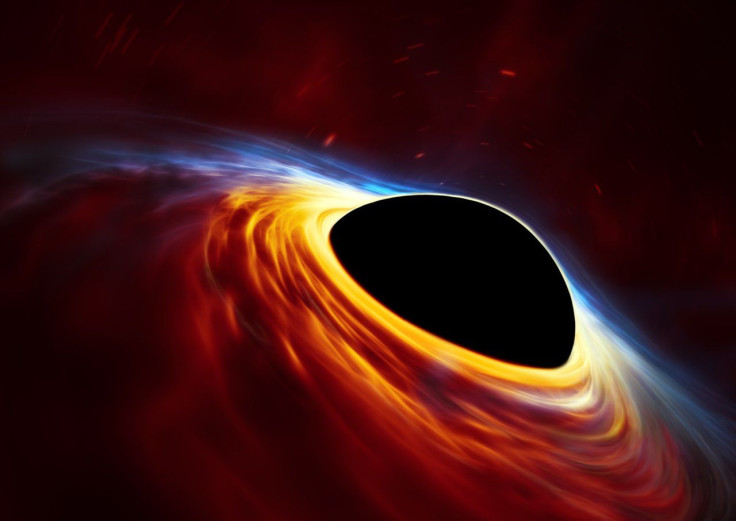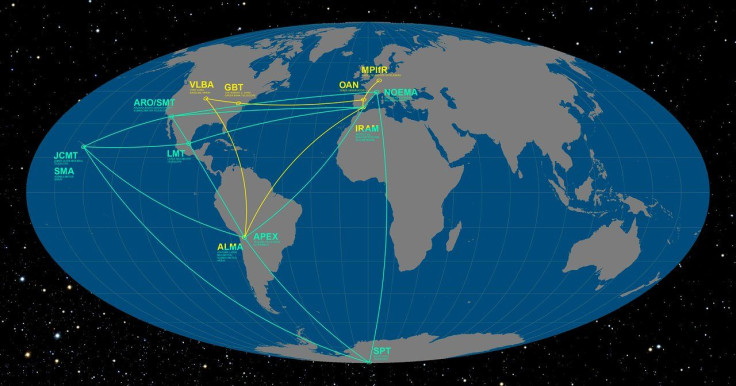What Does A Black Hole Look Like? Event Horizon Telescope May Soon Image The Boundary Of No Return

Black holes are perhaps the most mysterious class of objects in the known universe. Part of the enigma stems from the fact that despite overwhelming circumstantial evidence for their existence, no one has actually ever seen a black hole.
This might soon change.
An international collaboration that seeks to image the event horizon of Sagittarius A* — the supermassive black hole at the center of the Milky Way — will begin its first observations Wednesday. The ambitious experiment, which involves creating an Earth-sized telescope by linking an array of radio telescopes spread across the world, has been aptly named the Event Horizon Telescope (EHT).
Read: Our Black Hole Has Been 'Eating Snacks' For The Last 6 Million Years
“To do this, astronomers will exploit a technique known as Very-long-baseline Interferometry (VLBI), where telescopes thousands of kilometers apart can link together and act as one. This cooperative technique can achieve a far higher resolution than any single facility could obtain on its own — a resolution 2,000 times that of the NASA/ESA Hubble Space Telescope,” the European Southern Observatory (ESO) explained in a blog post Thursday. “This super-high resolution is crucial for detecting the black hole, which — despite being 30 times bigger than the Sun — lies a long way away, over 26 000 light-years from Earth.”

The ESO’s Atacama Large Millimeter/submillimeter Array (ALMA), which has, among other things, helped astronomers precisely measure the mass of a distant supermassive black hole, joined the collaboration last week.
“Located high up on the Chajnantor plateau in Chile’s Atacama Desert, ALMA’s 66 antennas and exquisite receivers make it the largest and most sensitive component of the EHT/GMVA collaboration, increasing the overall sensitivity by a factor of 10,” the ESO said. “ALMA has undergone several upgrades to take part in the collaboration. Specialist equipment has been installed, including new hard drives that are necessary to store the sheer amount of data produced by the observations, as well as an extremely accurate atomic clock, which is critical to link ALMA to the entire VLBI network.”
The GMVA — an acronym for the Global mm-VLBI Array — has already begun observations at 3 millimeter wavelengths, and will continue to do so until Tuesday. The EHT will then carry out observations at 1.3 millimeter wavelengths from April 5 to 14. The results of the observations are expected to become available by the end of 2017.
If the project succeeds in photographing the black hole’s event horizon — the boundary beyond which our current understanding suggests nothing, not even light, can escape a black hole’s gravitational pull — it could provide a concrete test for Einstein’s general theory of relativity. Models based on this theory predict a roughly circular shadow around the black hole.

“Now, it could be that we will see something different,” Sheperd Doeleman, director of the EHT project, told BBC News in February. “As I've said before, it's never a good idea to bet against Einstein, but if we did see something that was very different from what we expect we would have to reassess the theory of gravity.”
© Copyright IBTimes 2024. All rights reserved.





















